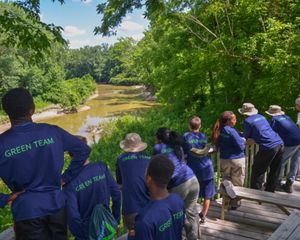Ohio Top Ten Adventures
From hiking to fishing to birding, TNC’s network of preserves offers something for everyone across the state. Choose your own adventure.
1. Kid Around

There is so much to do at the Grand River Conservation Campus. It is a great place for kids and adults alike. Discover the Dr. James K. Bissell Nature Center that opened in October 2017. Enjoy the programs offered and the nature displays including a real, endangered massasauga rattlesnake!
Play on the playground that overlooks the campus and preserve. Go fishing in Bliss Pond or the Wild and Scenic Grand River that is just steps away from the nature center. Put in your kayak or canoe to paddle the river or explore the trails on foot with our I Spy Nature Scavenger Hunt or self-guided naturalist hike that leads by the river and into our Morgan Swamp Preserve.
2. Connect with the Past
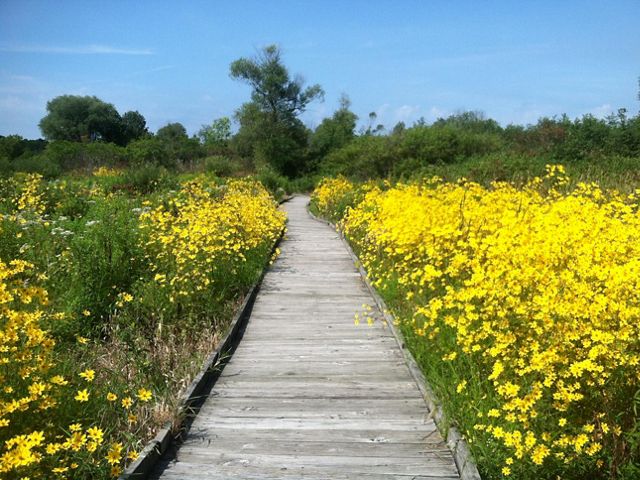
J. Arthur Herrick Fen Preserve protects one of the last remaining boreal fens in Ohio. The fen was created thousands of years ago by retreating glaciers, so visiting the preserve provides a look into the natural history of Ohio. The unique geology allows for the rise of cold, calcium- and magnesium-rich springs which supports a unique collection of plants. The easy, one-mile, round-trip trail with boardwalk offers an outstanding opportunity to view seeps and fen plants. See if you can identify rare plants like the bayberry or enjoy the shade of the tamarack trees, which are the only deciduous conifers native to Ohio.
3. Find New Habitats Around Every Corner

Kitty Todd Nature Preserve sits within the unique Oak Openings region that spans Northwest Ohio and Southeast Michigan. The 1300-square-mile Oak Openings Region is a complex of oak savanna and wet prairie that developed on sand and clay deposited by glacial Lake Warren, the ancient predecessor of present-day Lake Erie. The various ridges and deposits have created many smaller microclimates that offer one of the highest densities of rare species in Ohio. Bring your field guide with you as you walk the easy loop trail. You'll see Ohio's only native cactus, Eastern prickly pear (Opuntia humifusa) or wet prairie plants like big bluestem (Andropogon gerardii) . You'll see towering, majestic oaks and wild blue lupine (Lupinus perennis), which is the larval host plant for the federally endangered Karner blue butterfly.
4. Walk Through an Enchanted Forest
.jpg?crop=222%2C0%2C3556%2C2667&wid=640&hei=480&scl=5.55625)
The boardwalk that meanders through Brown’s Lake Bog Nature Preserve feels ethereal as the sunlight pokes through the forest canopy and creates a glowing effect as it gently shines down on the fern-covered floor. The easy trail ends at the overlook of an ancient bog with a floating sphagnum moss mat and a 7-acre kettle lake that was formed by retreating glaciers. Visitors should bring cameras and binoculars to help spot and document some of the preserve’s 20 rare species that only survive in this unique, wild habitat. Find carnivorous pitcher plants, round-leaved sundews, tawny cottongrass grass-pink orchids - and more!
5. Paddle Through Wildflowers

Great Egret Marsh Nature Preserve offers a unique opportunity to get up close with a Lake Erie coastal marshland. Drop in a canoe or kayak in summer and you'll be paddling among the native American water lotus (Nelumbo lutea). It is the largest wildflower in Ohio that typically blooms July through September. As you enjoy the blooms, either from a kayak or walking along the easy trail, you'll also see a variety of wildlife. Great Egret Marsh is a great spot for birding. Waterfowl like great egrets, and birds of prey like bald eagles enjoy the abundant aquatic food supplied by the wetland.
6. Protect Ohio's Hemlocks

You’ll be exploring one of the state’s largest privately protected wetlands when you walk the trail system at Morgan Swamp Nature Preserve. You'll also be walking through a beautiful, peaceful Eastern hemlock forest. Hemlocks in Ohio are in danger of being affected by the invasive Hemlock woolly adelgid. TNC staff are working with partners to survey lands for the pest, determine the best treatment plan, and implement those plans to stay on top of woolly adelgid populations in Ohio. Anyone can help keep an eye out for this pest, in fact, citizen scientists were the first to identify this pest in our state. Learn to identify the woolly adelgid and what to do if you find it.
7. Go Birding
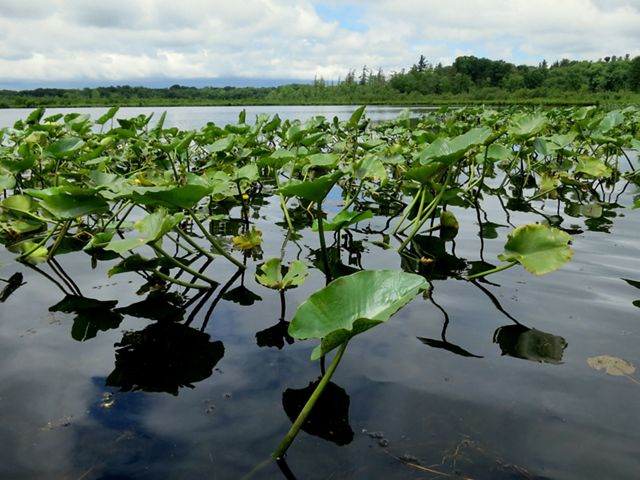
You can enjoy birding at any of our 8 open preserves in Ohio or the many more TNC preserves around the world. The Lucia S. Nash Preserve, though, is our newest preserve in Ohio. It was once a private camp, and so has been protected and cared for over the years. The pristine, high-quality wetlands are part of a larger regional complex that supplies water to the City of Akron. The lands hold beautiful large trees and native plants. Many waterfowl including a pair of Sandhill cranes can be seen or heard on the lake. Other birds enjoy the upland forest and wetlands on the property. Vernal pools are abundant in the spring. Take a virtual naturalist hike with one of our staff and then go visit and explore.
8. Study Stream Restoration
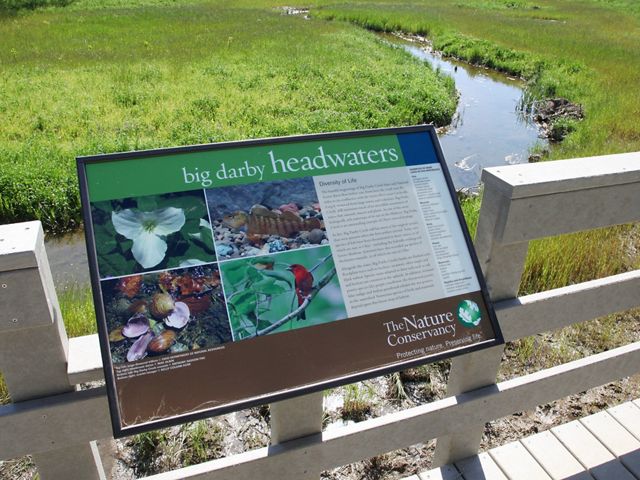
Big Darby Creek is one of the most biologically diverse streams in the Midwest. Big Darby Headwaters Nature Preserve protects the smaller seeps and streams that form the very beginning of the Big Darby. The preserve shows our stream restoration project which restored a straightened ditch back into a meandering stream. The curves in the channel slow the flow of the water which helps the river filter out sediment properly and support a variety of wildlife. Read the interpretive signs as you walk the trail system to study the stream and discover which plants and animals you might find nearby.
9. Hike All Day Long
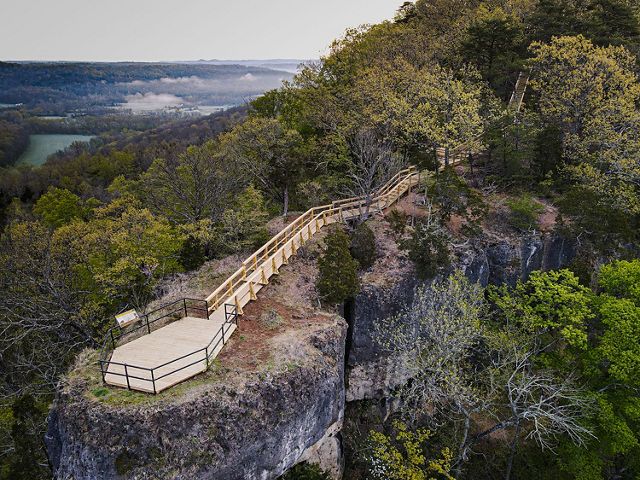
One of the best overlooks in Ohio exists at Buzzardroost Rock at the Edge of Appalachia Preserve System. Hike the 4.5-mile, round-trip trail and explore unique plant communities and diverse geologic history on your way to the overlook. While you are in the area, take advantage of the four additional TNC trails open to the public. With a total of 27 miles of trails, you can hike all day long at the Edge of Appalachia. Explore prairie remnants and wildflowers, waterfalls and rocky outcroppings, forests and streams. Of course, you should also watch for the many species of birds and other wildlife like bald eagles, eastern fence lizards, butterflies and so much more.
10. Honor a Conservation Legend
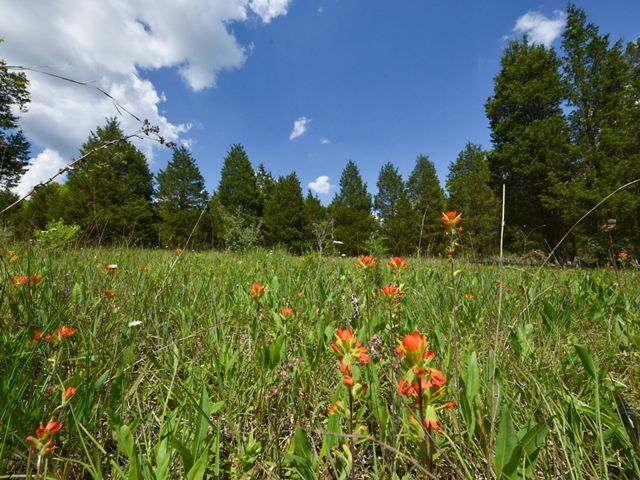
The Edge of Appalachia Preserve is one of the most biologically diverse collections of natural systems in the Midwest. Bring a field guide as you hike the trails in search of some of the 100 rare species that can be found throughout the preserve. Start with the E. Lucy Braun Lynx Prairie Trail and you'll be walking in the footsteps of E. Lucy Braun, renowned botanist. Lynx Prairie was one of her favorite places to visit and study. She often went with her sister, Annette, an entomologist. Lucy and others advocated for the protection of Lynx Prairie, which became The Nature Conservancy's very first preserve in Ohio. What started as a 42-acre preserve because of Lucy, has grown into the 20,000-acre Edge of Appalachia Preserve System due to the work of many conservation-minded supporters that have followed. Watch a documentary about Lucy and then go explore her legacy.
Support Our Work in Ohio
Help us protect these lands and waters so that generations to come of people and wildlife can enjoy them and benefit from the clean water, air and habitats.


